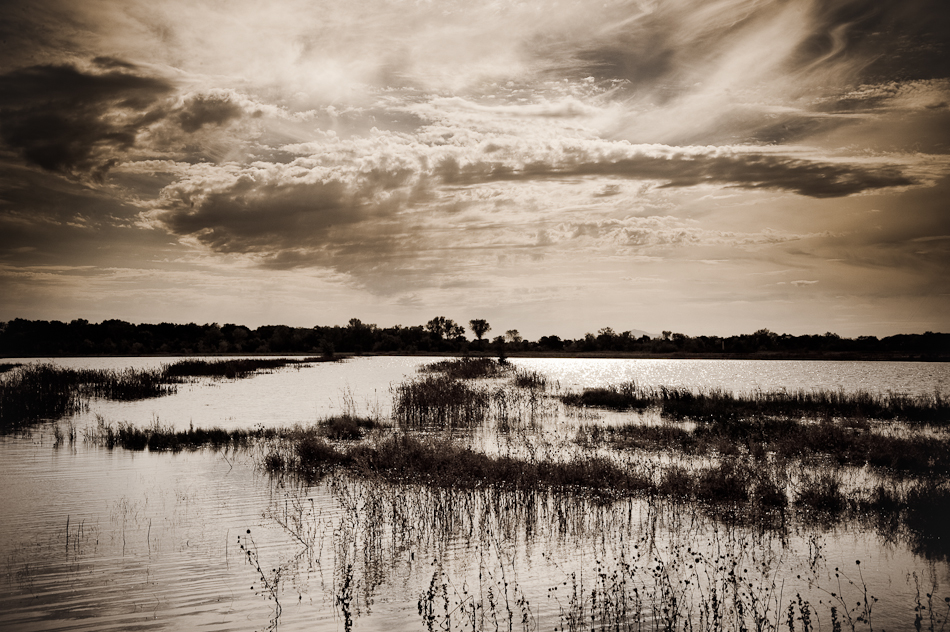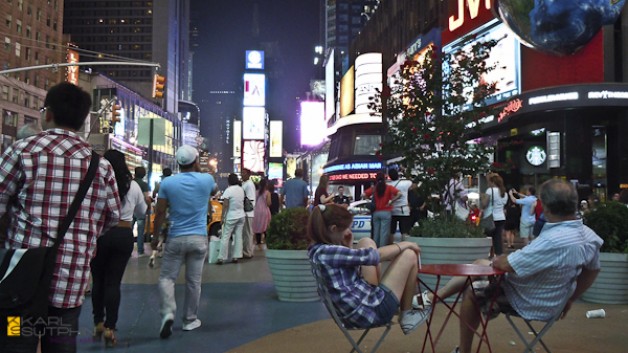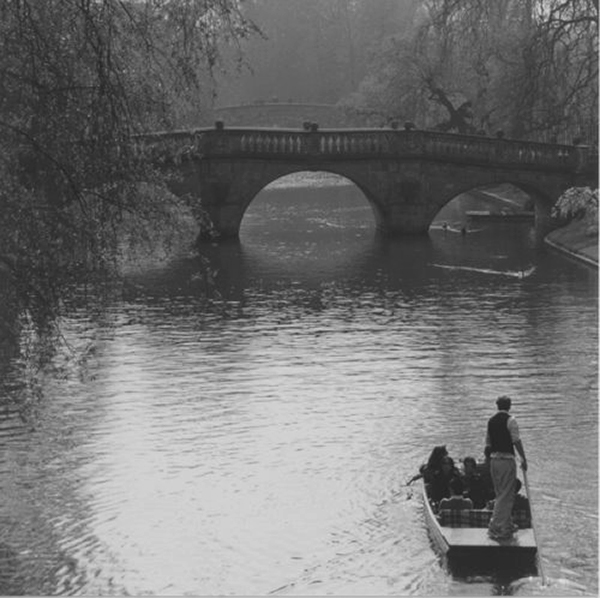


Short answer – Yes. Why can’t it be art?
Chaos – a confused mass or mixture – Merriam Webster Dictionary
Art is… art, for lack of a better metaphor. Just to name a few – there is good art, bad art, simple art, and chaotic art. I’ve seen art that pleases me, repulses me, and makes me think, all in one piece. There is a strong history and argument for creating elegant art. Where there is beauty in the simplicity of elegance, there is also beauty in chaos.
In my last post I wrote of the need for elegant art… “…to be purely about the message being conveyed. We don’t want distracting clutter that pulls us away from the intent of the piece. For many of us, we want the piece of art to be a deconstructed production that simply conveys the pure message or intent of the creation.” I agree with that statement. But when is it acceptable to pursue the beauty of the “confused mass or mixture”?
We all live in chaos at times. Between work, family, politics, traffic, shopping, desire, disappointment, and other life’s bits, we both thrive and struggle through life’s messiness. If art is supposed to be personal to the artist and chaos is all about us, maybe by capturing it in art, we are making a little order out it.
For me, it all comes down to the intent of the piece of art. If chaotic elements makes it what the artist needs, then go for it. As I’ve mentioned before, not all art needs to be beautiful to be great. I think if it makes you think, then it has served a great purpose. Those thoughts may be of chaos and that is another important flavor of art.
Elegance is:
“…a standard of tastefulness particularly in the areas of visual design, decoration, the sciences, and the esthetics of mathematics. Elegant things exhibit refined grace and dignified propriety. – Wikipedia
“… A tasteful richness of design. A dignified gracefulness or restrained beauty of style emphasizing neatness and simplicity.” Webtser’s Dictionary
Everyday we see the clutter of the world about us. We search for the proverbial needle in the haystack – whether it is a meaning in a book, the best cup of coffee in the city, or an answer needed for work. We are trying to refine out all the superfluous and discern down to the true essence of what we need. We seek that simple clarity that we appreciate, crave and helps us either go deeper or take what is needed and go forward. We continually seek the elegant discovery.
One core aspect of art is the concept of elegance. We want it to be purely about the message being conveyed. We don’t want distracting clutter that pulls us away from the intent of the piece. For many of us, we want the piece of art to be a deconstructed production that simply conveys the pure message or intent of the creation.
I greatly appreciate both seeing and creating elegant photos. I want the subject to be the core essence with minimal distractions around it. This is very important when I photograph people. The elegant portrait conveys both the person’s likeness and her or his personality. This likeness can be truthful or a desired “reality” . Regardless, the subject is the key element and everything else should be subdued or eliminated if it doesn’t add to the message or meaning of the photo.
Elegant art doesn’t always have to be “pretty” art. Richard Avedon’s In the American West is a great example of this concept. The images are elegantly simple and show the distilled essence of the subject by removing all context of location and environment. We are forced to look in the eyes at each person and try to figure out what the meaning in the photo is for ourselves.
Not everything can be reduced to the elegant simplicity we want and that is ok. Chaos can also be beautiful and deserves to be captured in art as well. I will write more in the future about this aspect of art.
Most of us desire elegance, whether it is in art, the solution, a hotel room, or the beauty of a moment. Elegance helps us to whittle away the distracting bits of life and helps us discover the truth, simplicity, and sublime moments, messages, and aspects of our lives.

There will be over 100 billion photos uploaded to Facebook and other sites this year. This glut of images demeans the power of photographs. Everyday, the captured photos means less and less. The photo is becoming as anonymous and impossible to discern from its neighbors as a grain of sand.
First, not all important photos hold meaning for everyone. Every one of us holds a personal aesthetic, taste, or preference on what we find meaningful. I recognize Diane Arbus’ photos have meaning for many, but they hold very little for me. Even though I feel this way about her work, I appreciate her work and respect others’ opinions on their meaning and importance. So, we must recognize that meaning is different for each viewer. With that said, we need to review my rules about what makes a photo meaningful.
For a photo to have meaning, it must provide the viewer three things; a personal connection, evoke emotion and thought, and make you feel you need to look at it again. There are other crucial elements for photos to have meaning, but these three are the most important for me. Let us look at each element separately.
Personal Connection in Photos with Meaning
Remember a photo that you looked at and instantly felt represented a part of your life. Maybe it was two people kissing and you remember sharing that kiss with someone special, or maybe it was seeing someone’s quiet mourning a tragic loss and the image reminds you of when you went through similar experiences. These photos connect with you because they mean something to you. It can be a subtle, simple connection like a serene sunset or a powerful complex connection like seeing the world change in an instant (e.g., a photo of the Twin Towers burning).
Evoke emotion(s) and thought through Photos with Meaning
Photos, like all other forms of expression, should make you feel something and think about it. A good photo should stir those emotions, regardless if they are happiness, lust, love, sadness, heartbreak, joy, pride, devastation, or contentment. For a photo to have meaning, it has to make you feel something. Once you have taken time experiencing the emotion the photo evokes, it should then make you think. Ask yourself:
- “What emotions am I feeling?”
- “Why do I feel this way?”
- “Is this important to me?” “Why?”
- “Does this photo only involve me, or is it something beyond me?”
- “Who else needs to see this photo?”
- “What is this photo saying and is it effective in doing it?”
Each of these questions will help you decide if the photo has meaning or not. It is okay if you create or see a photo that has meaning only for you. I take thousands of photos that have meaning only for me. When I recognize their potential power, but limited scope of meaning of these images, I must then respect the audiences I present them to. Are they meant for many, a niche group, a select few, just family, or just me? After thinking about these questions, I decide where, when and how I share them, if I share them at all. Sometimes some images are only meant for me. I highly encourage every *photographer to think before they publish their photos.
Making you feel you need to look at a photo with meaning again
If you have spent the time with the photo to meet the criteria of the first two rules, you have probably me the third rule as well. By finding a connection with a photo, feeling emotions, developing thoughts, and trying to find out why the image is important to you, you probably looked at it many times (maybe in only a short time) to digest it.
Everyday you are bombarded by thousands of still and moving images. Almost all them hold no meaning to you and your brain to chooses to consume them in one bite and move on by forgetting them. Your mind instantly decided if the photo merited more study, more viewing and then helped you move on. Be thankful for this ability to unconsciously edit the trivial, menial garbage glut of photos we plow through every day. If you couldn’t, your mind would explode from all the useless information you sense every day. Instead, your brain finds the few photos that have meaning (maybe only to you) and makes you connect to it emotionally, thoughtfully and forces you to look at it again and again.
You and I could look at a photo and both find meaning in it. What makes a photo important to you and hold meaning in your mind, heart, and soul will be unique though. That connection to the photo, or any piece of art, is as individual as a finger print or a snow flake. With that said, truly meaningful photographs then should have blizzard’s worth of individual connections. Each one unique, but many viewers find importance in them.
I will write more about the different types of meaning found in photos and how the image captures it. Meaningful photos can be beautiful, joyful, depressing, harsh, insulting, uplifting, ugly, loving, and any mixture of these attributes blended with many more. It will be fun to explore what truly makes a photo meaningful.
Please share your thoughts, comments, criticisms, and ideas. All are welcome.
*Not all people taking photos are photographers. They just take pictures. It is their frame of mind when taking the photo that makes them a photographer. More about this elitist point of view later.

With hundreds of billions of photos on uploaded onto the internet, it is easy to be overwhelmed by them all. This site celebrates those photos with meaning… those photos that rise above the meaningless snapshots and matter.
This site shares how to recognize excellence in photography and what life meanings we can extract from photographic fine art …
Enjoy!


